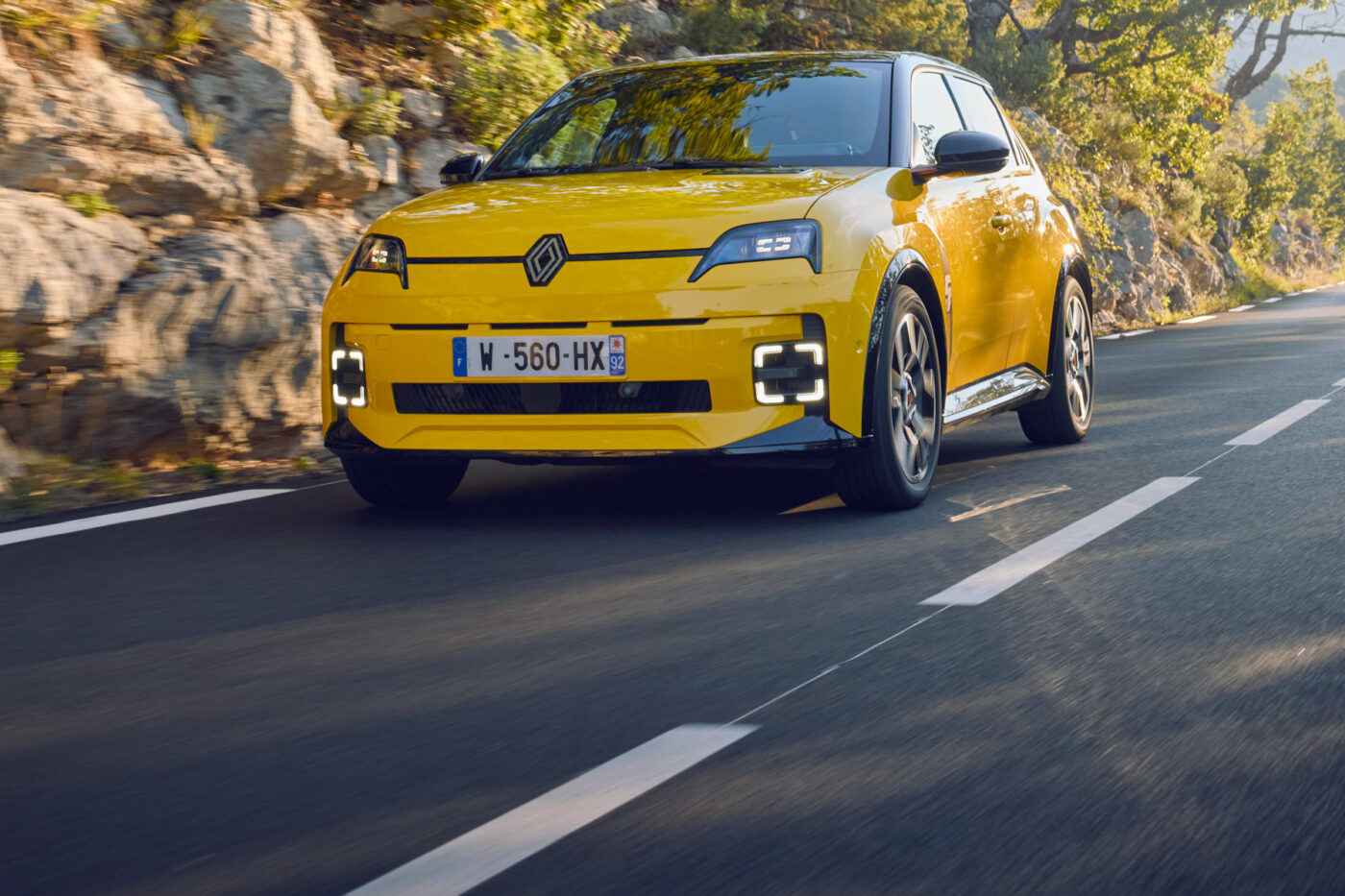
Renault 5 driving report: money saver with a fun factor
After 50 years and over five million units since the debut of the first edition, Renault is bringing the R5 back as an electric car. And just like back then, the French not only wanted to build a car that was – at least reasonably – affordable for everyone but also brought the fun back into the price-conscious world of petrolheads. And they are serious about the price war. Because at least in the medium term, the R5 should actually start at just under 25,000 euros, even if it starts at 27,900 euros for the market launch at the turn of the year, and the top model already costs 34,400 euros without one of the many extras.
The charm offensive begins with the design of the 3.92-metre short four-door model – inspired by the original and makes almost literal references (such as the rear lights) but does not fall into the retro trap. Instead, the crisp proportions, the sturdy appearance, the cool light signature and above all, of course, the illuminated ‘5’ as a charge level indicator on the bonnet also catch on with a generation that only reached automotive adolescence when the original had already been eaten out of the streetscape by rust.
The interior is just as endearing as the exterior. Of course, with a wheelbase of 2.54 metres, you can’t expect miracles. While the front seats are reasonably comfortable, the rear is correspondingly cramped, even though Renault designed the R5 as a four-seater. And at 326 litres, the trunk is not exactly an invitation to travel the world.
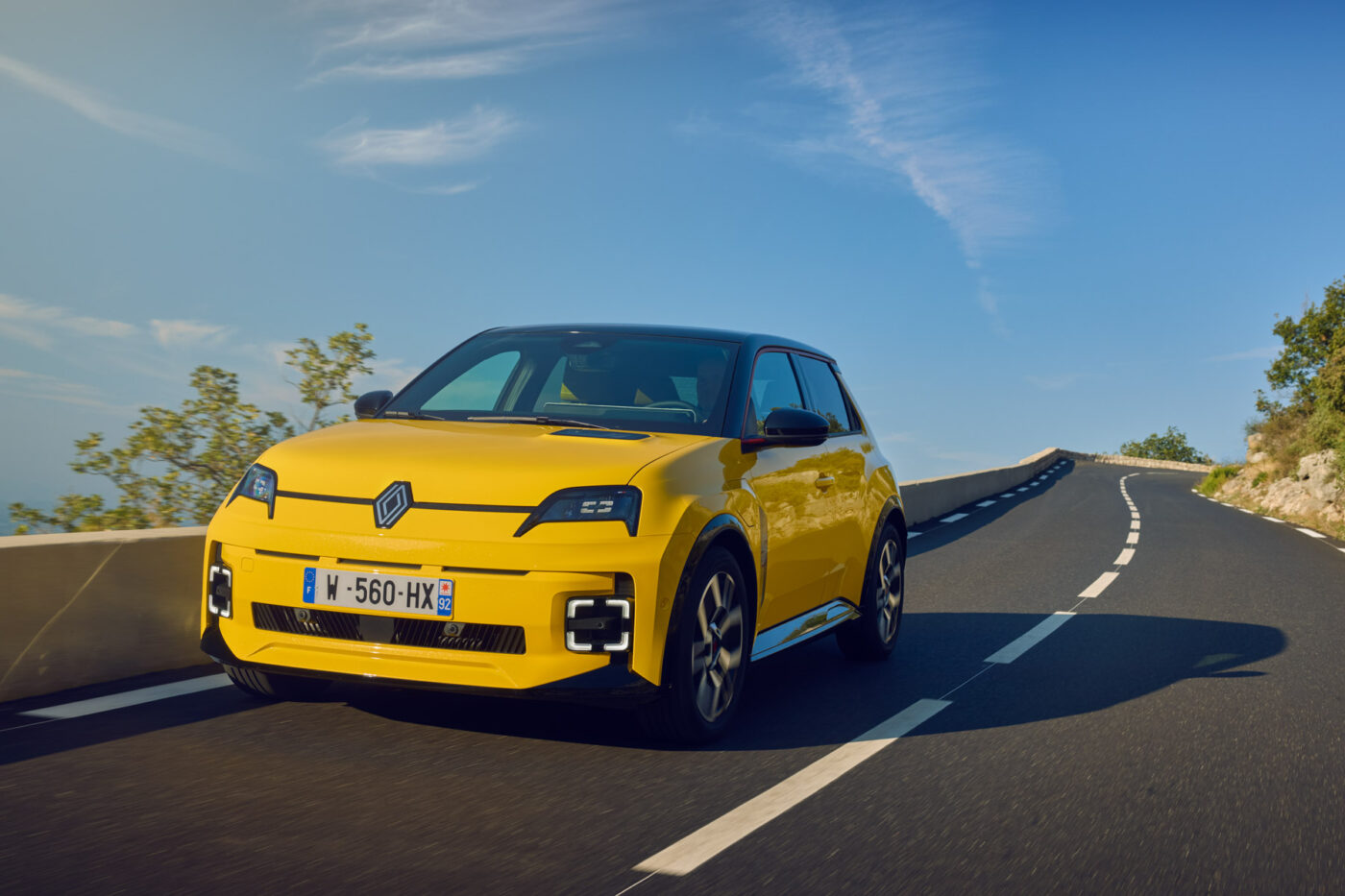
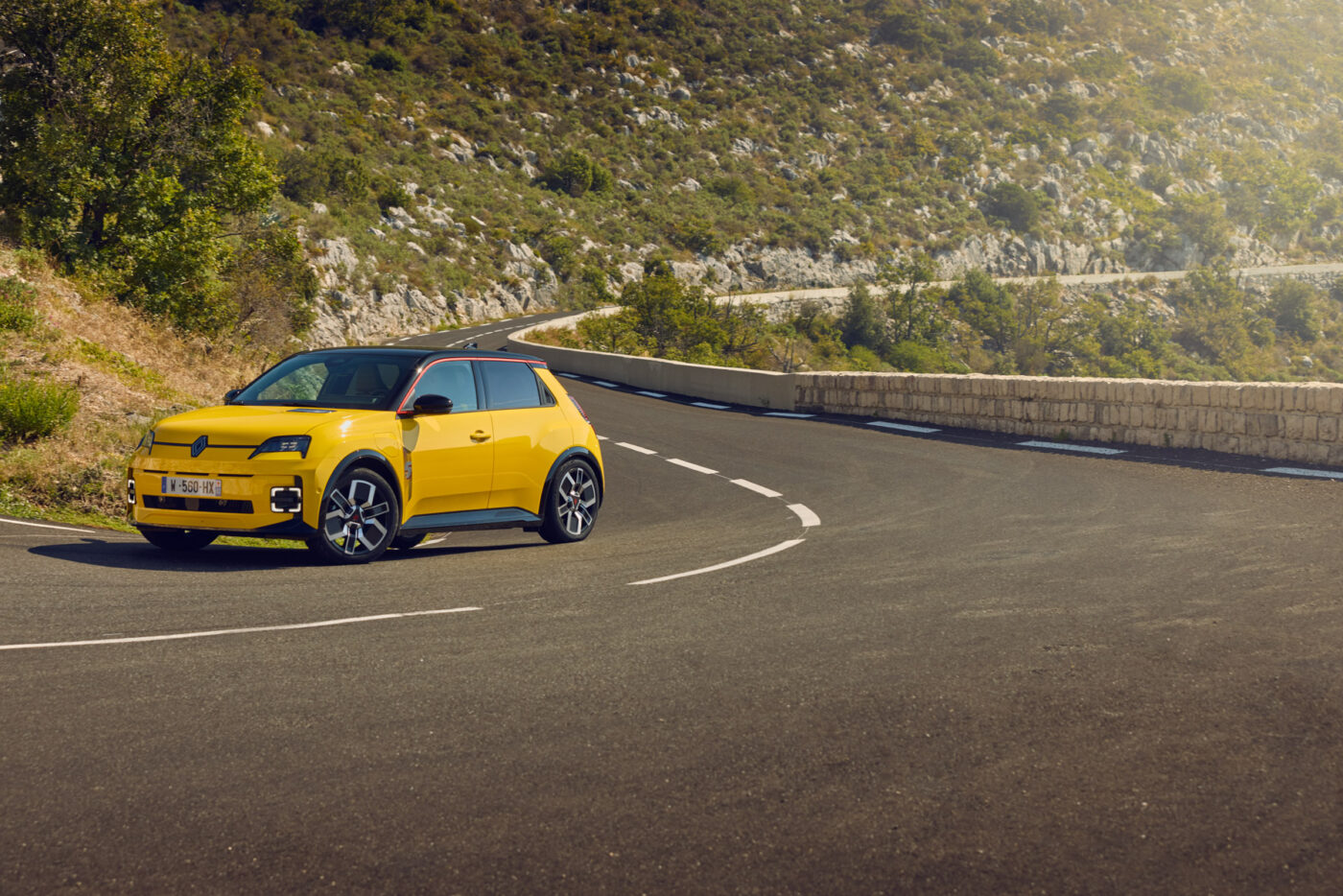
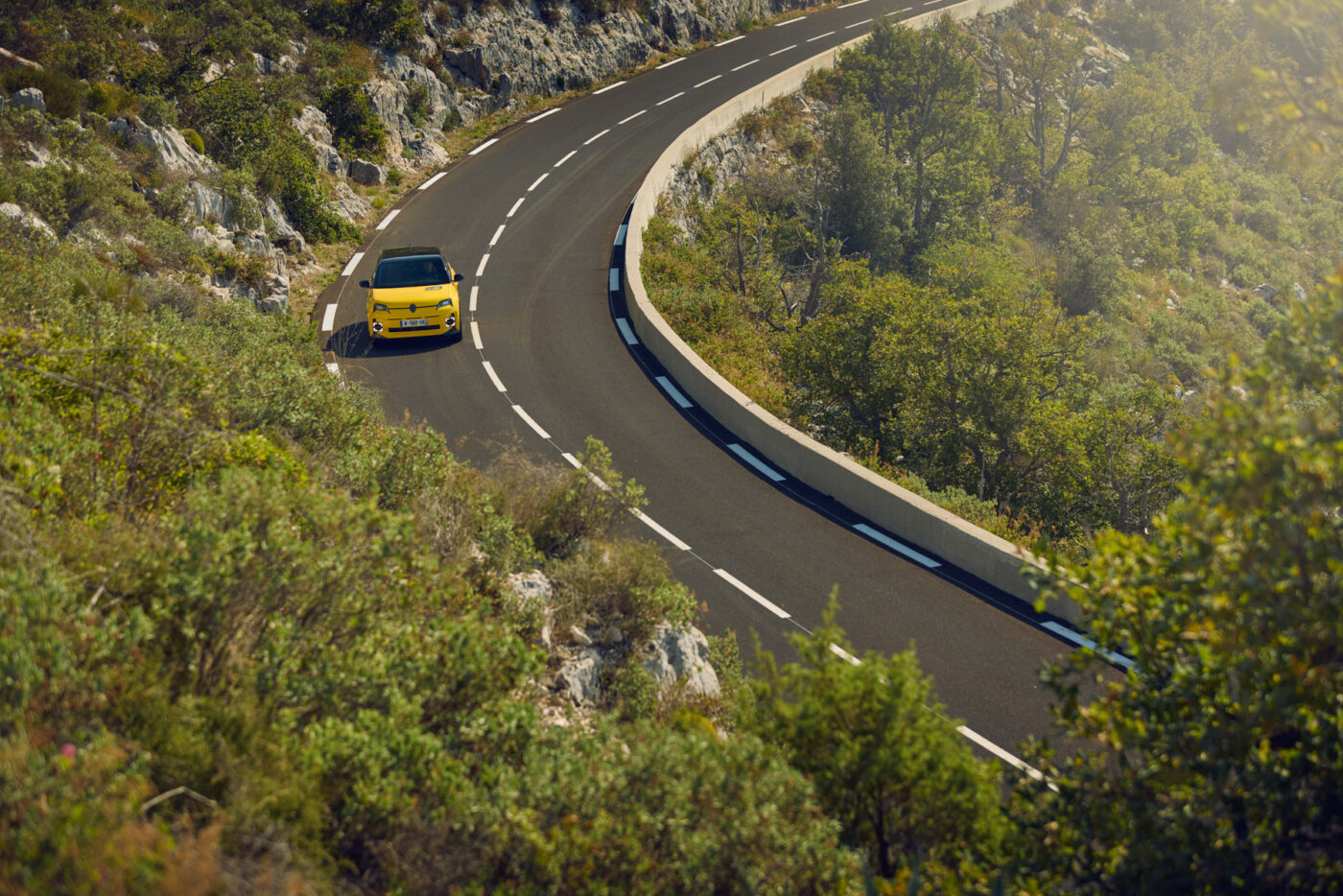
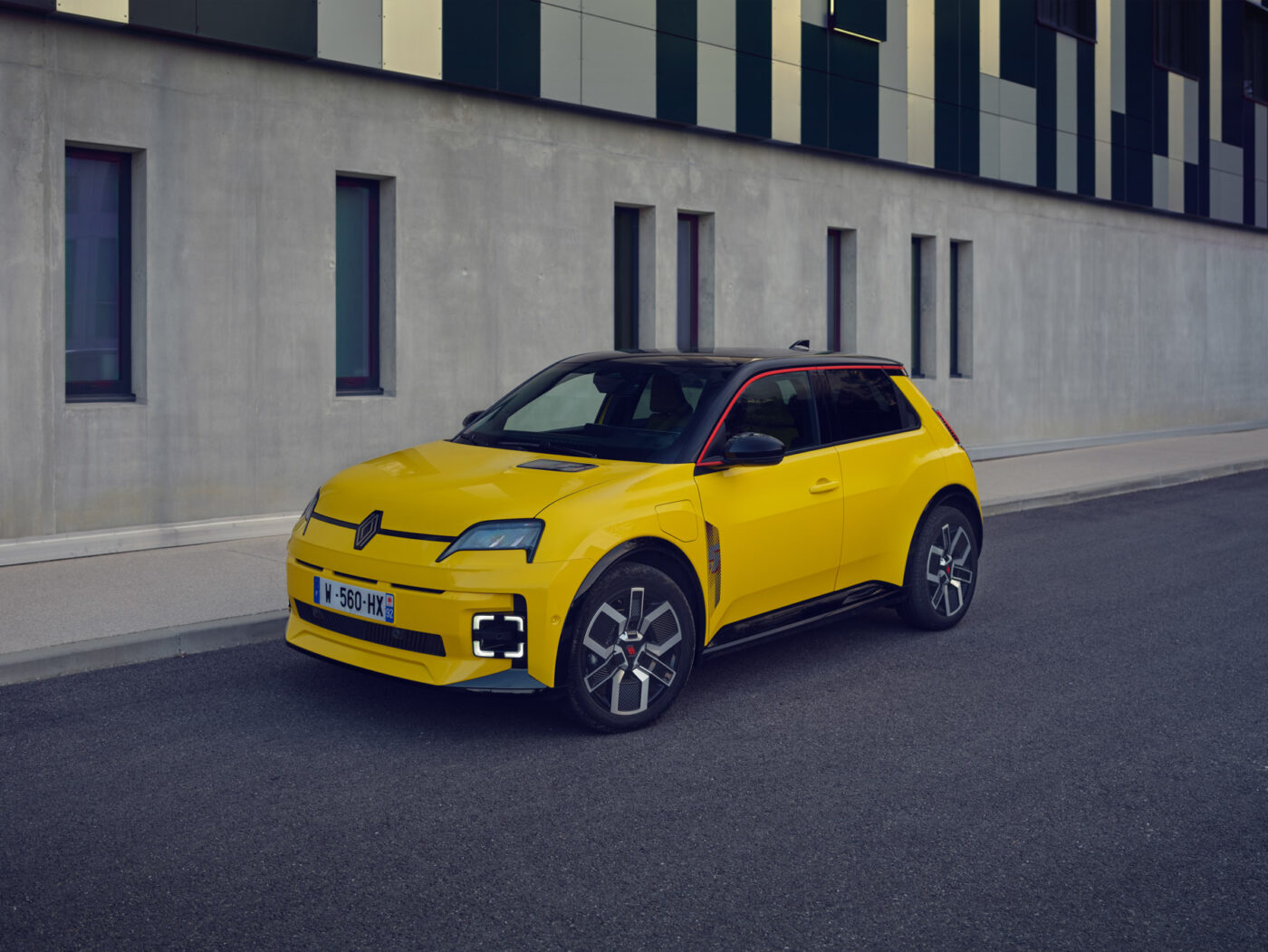
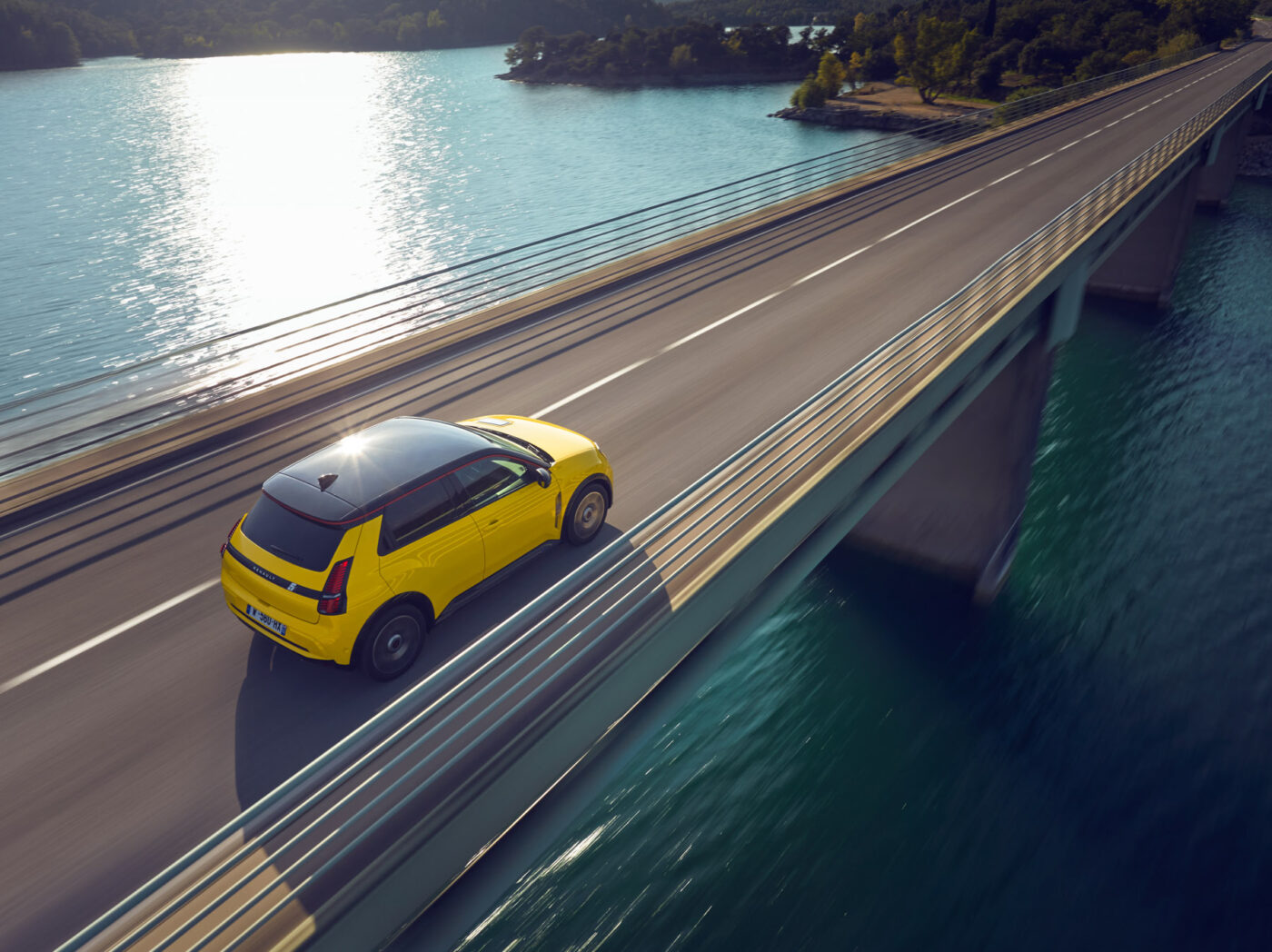
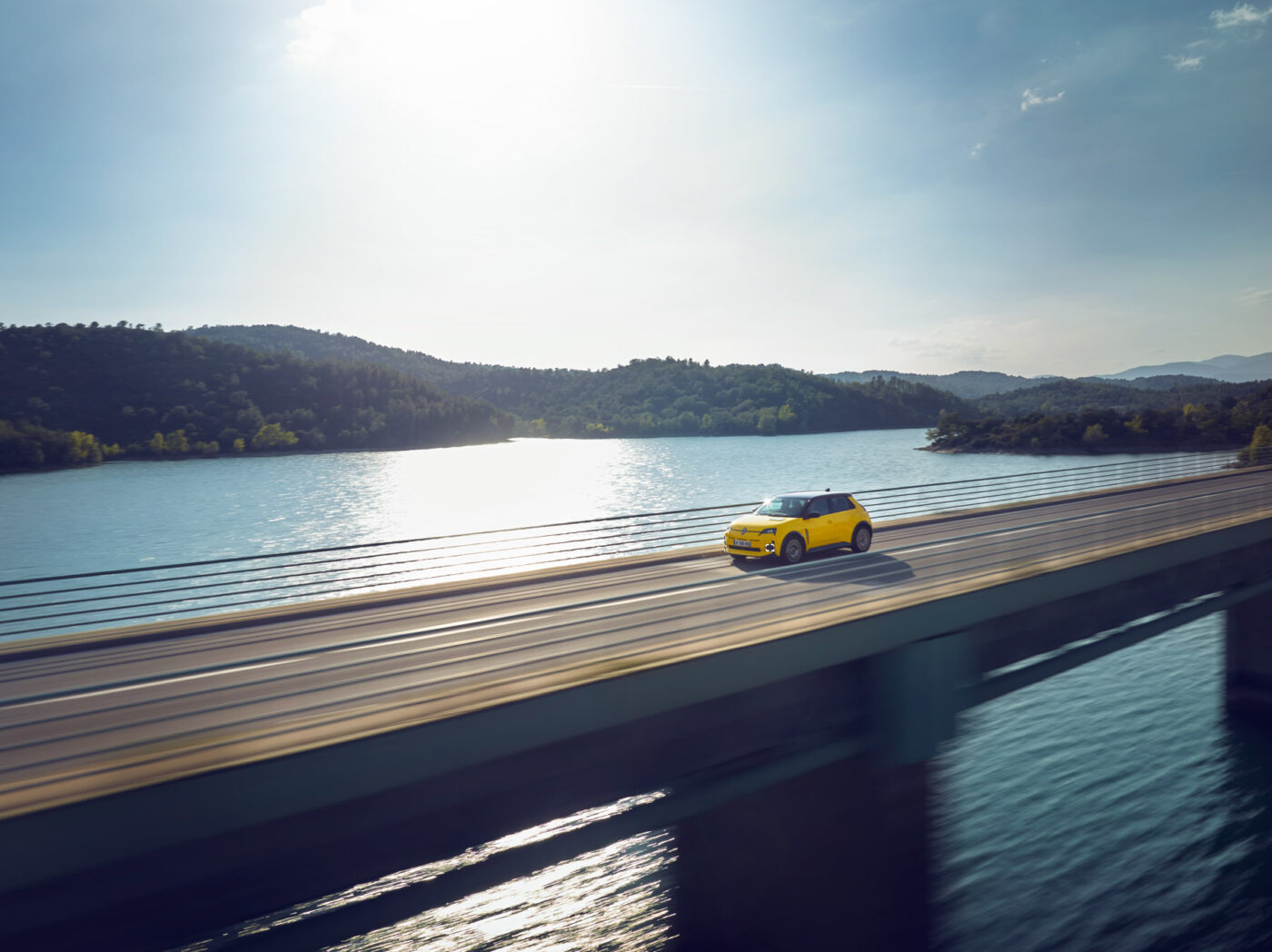
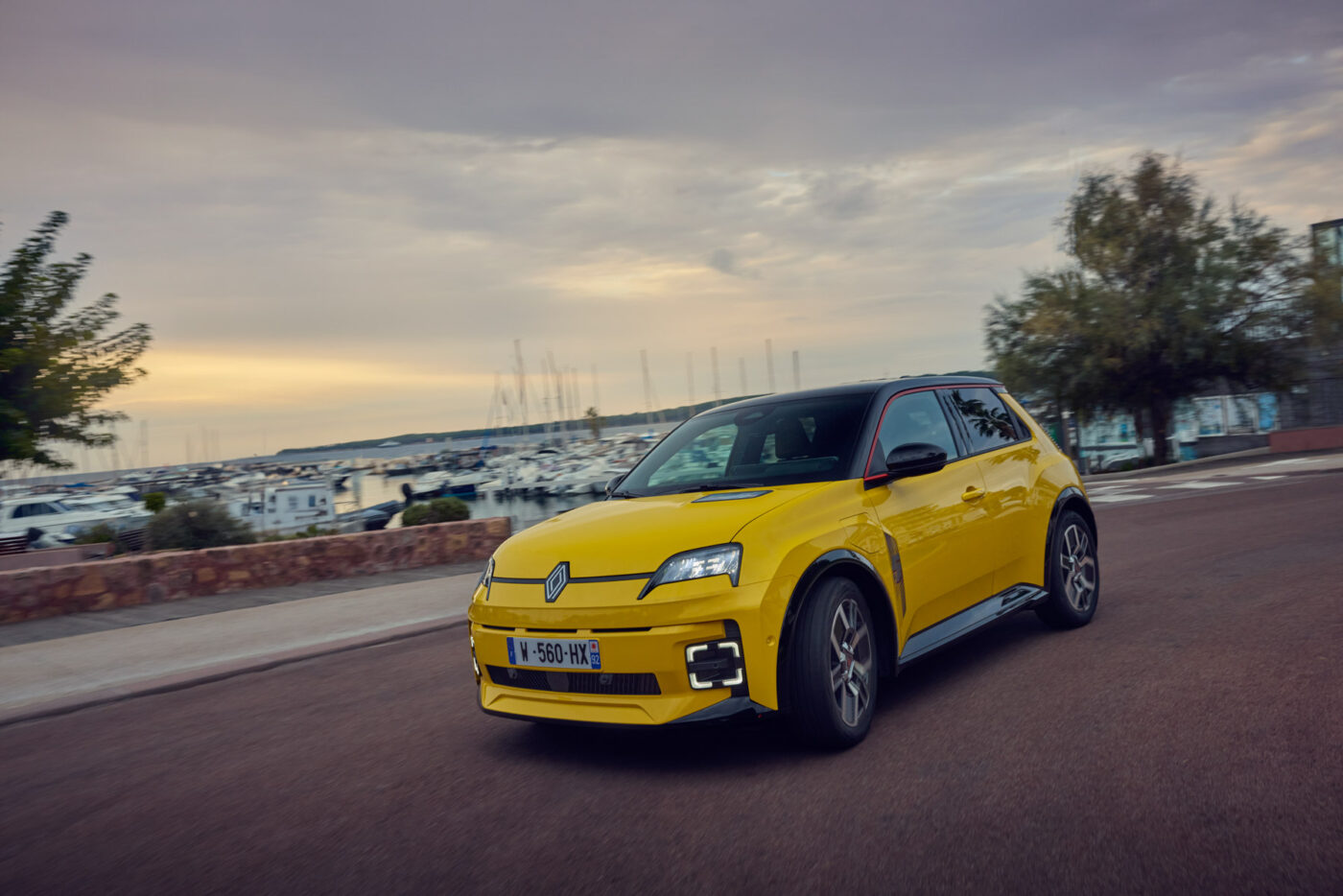
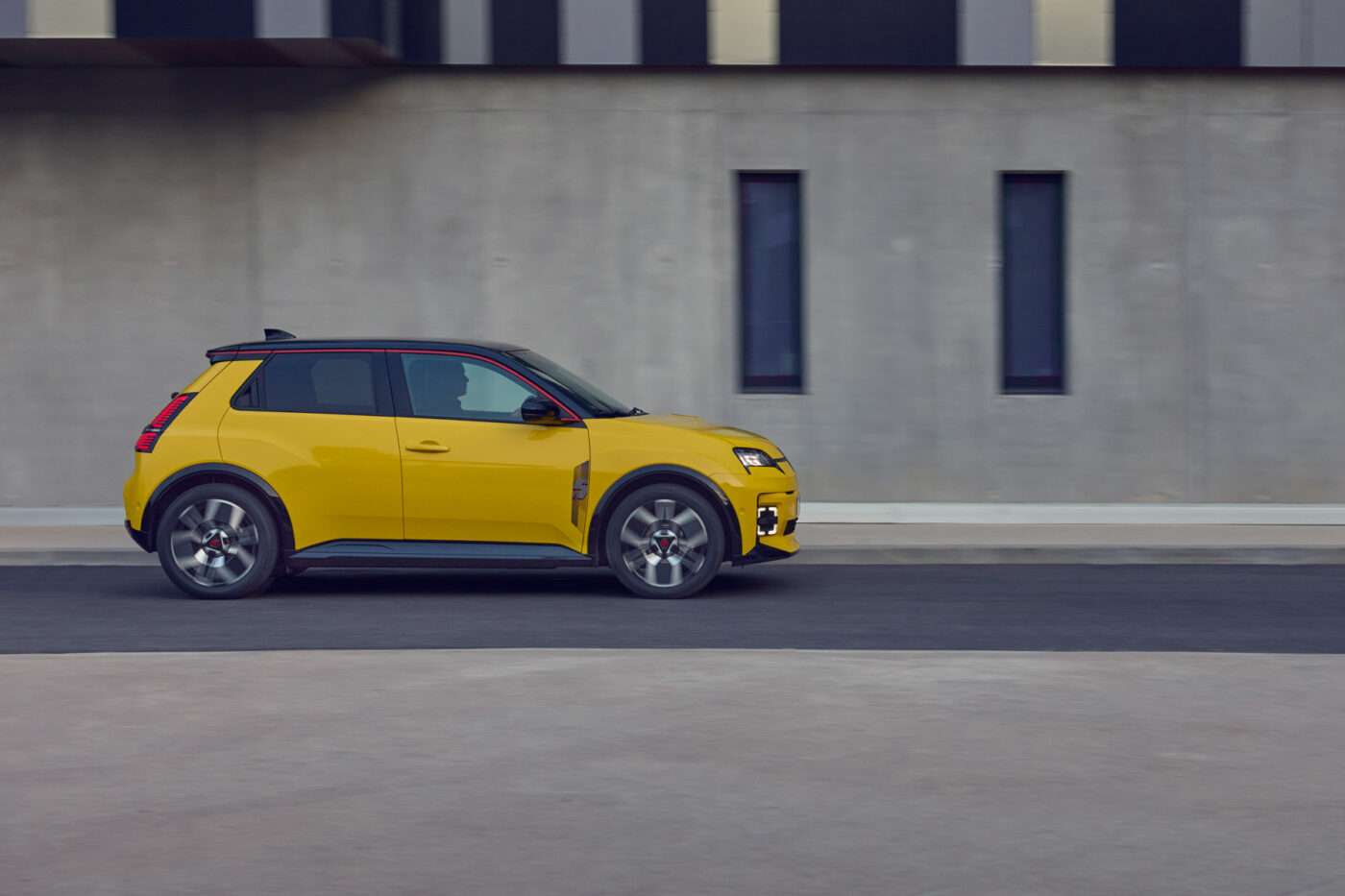
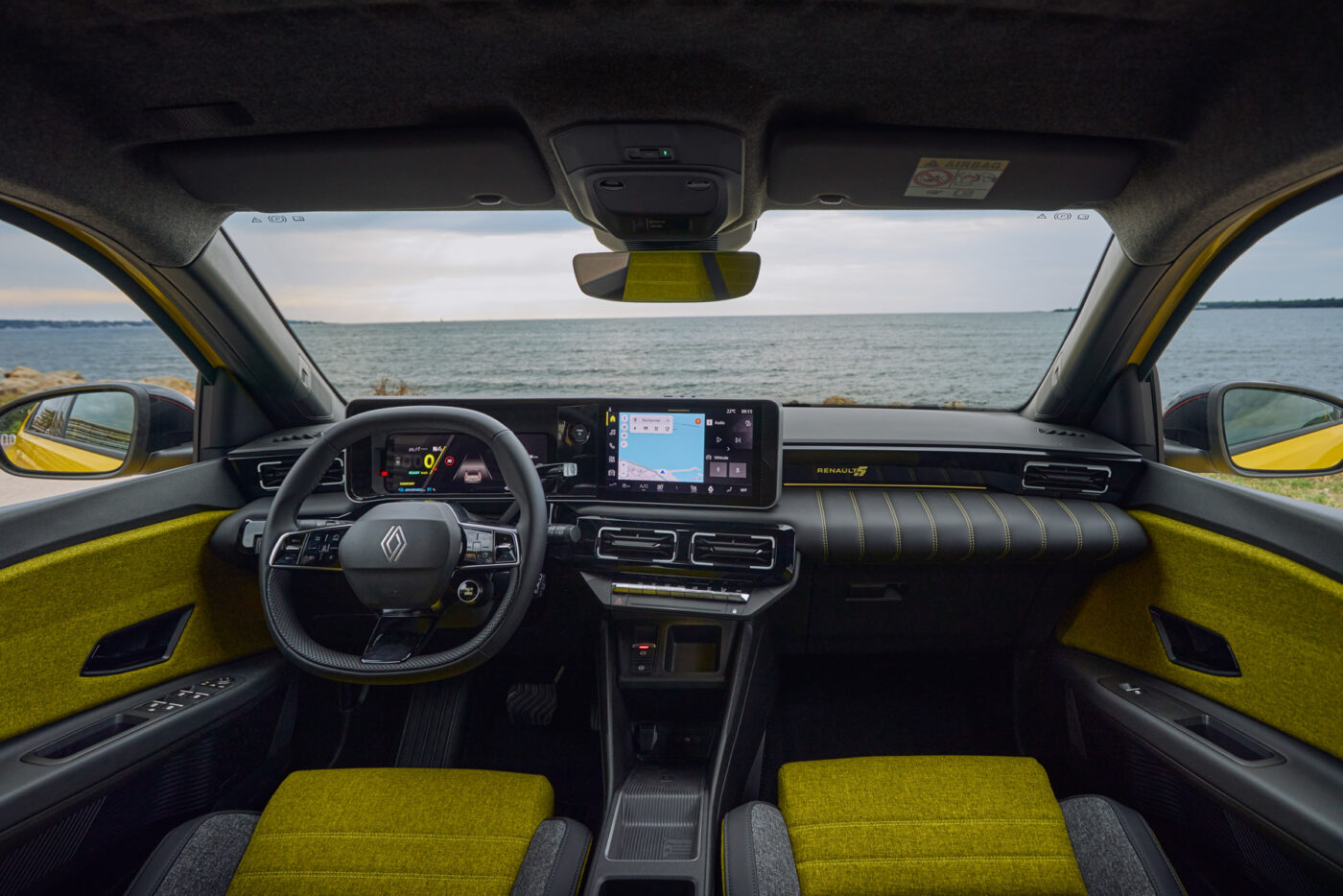
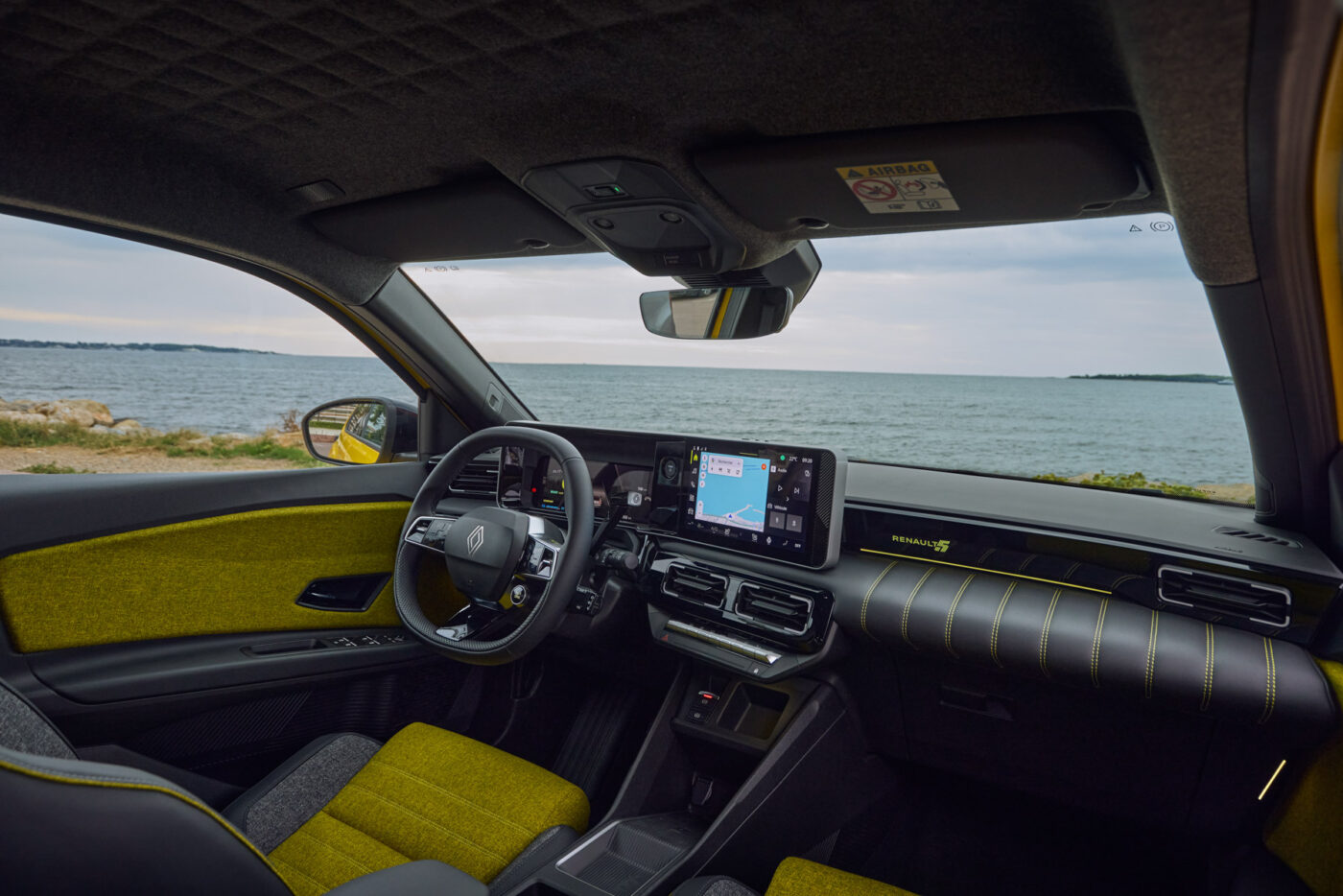
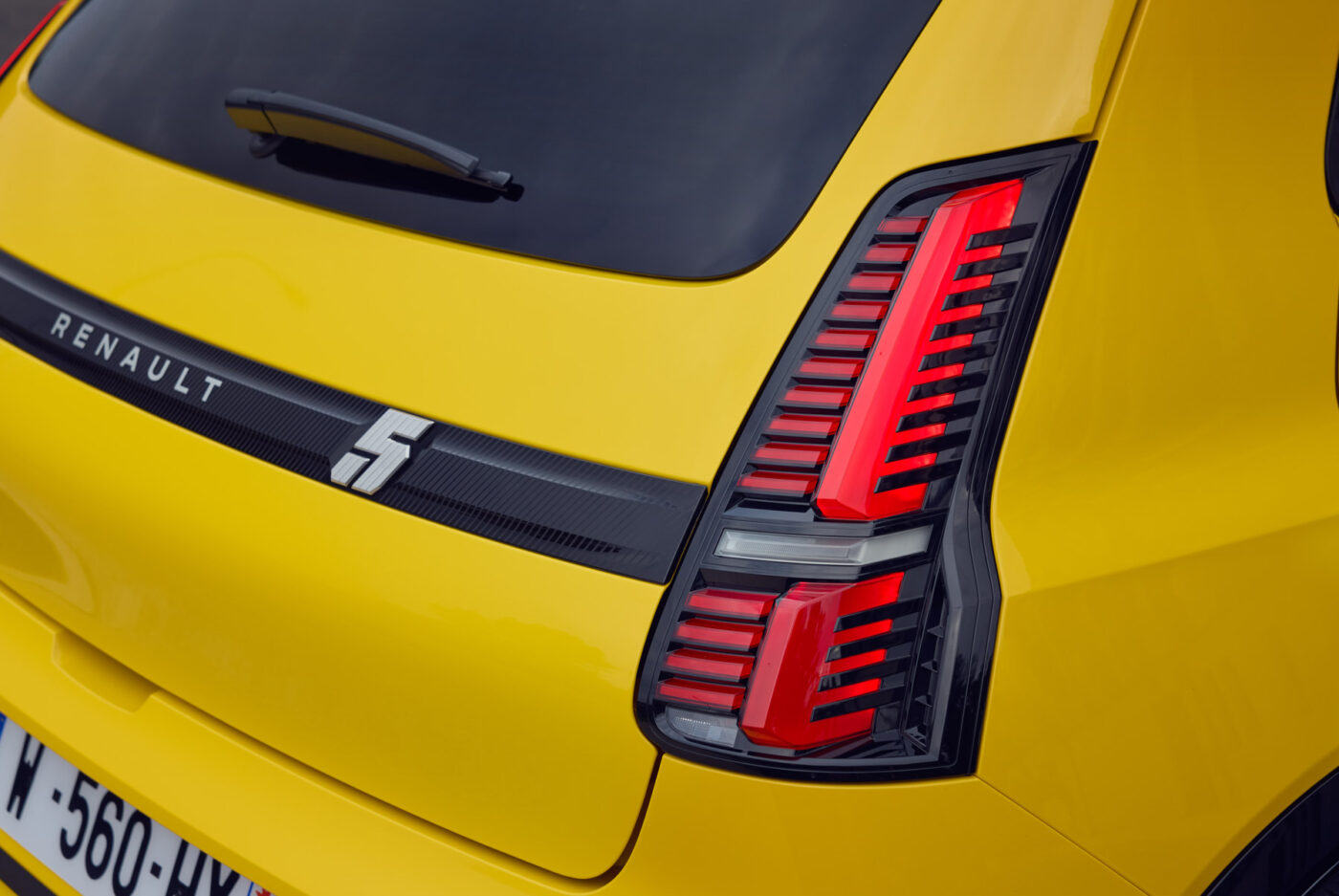
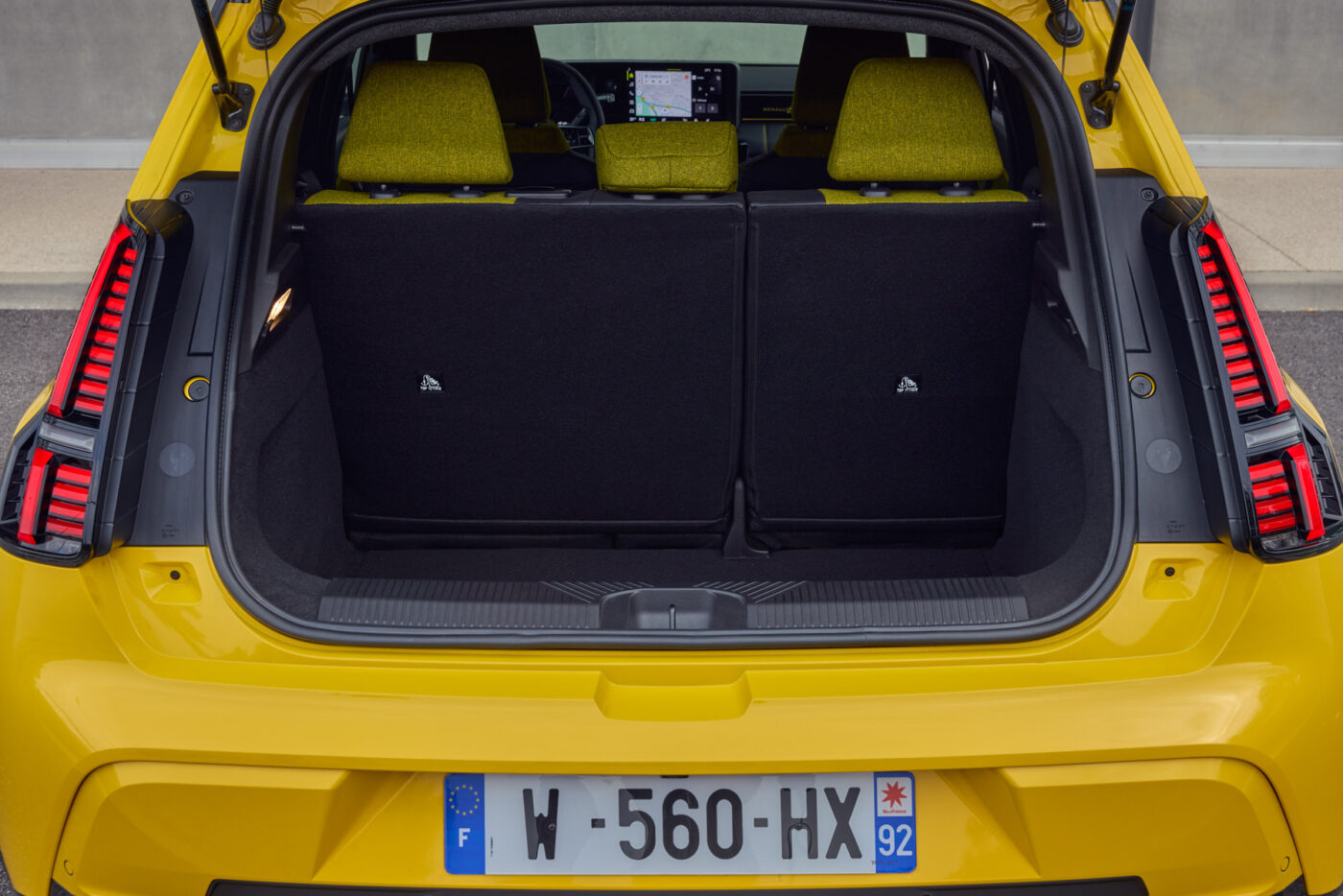
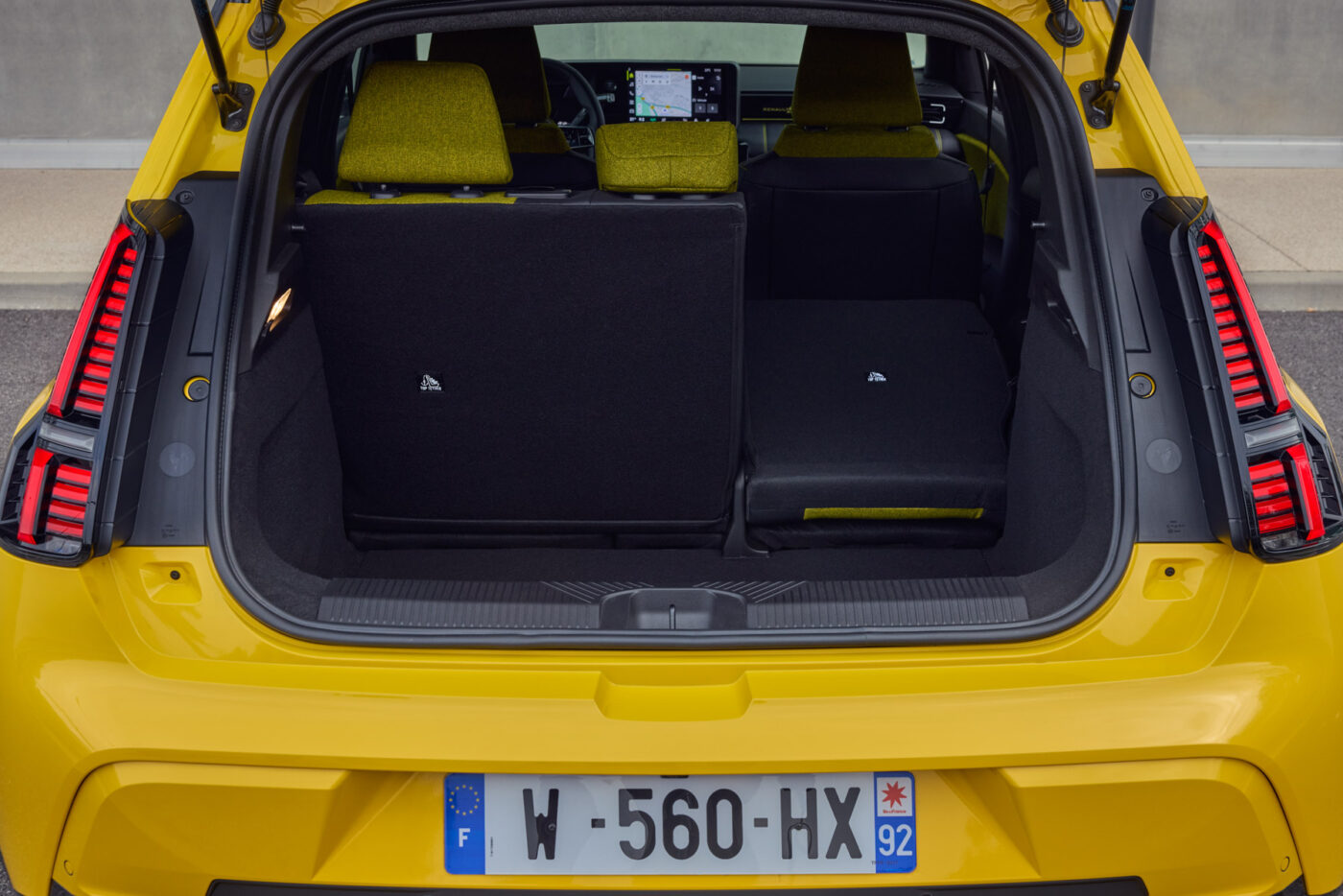
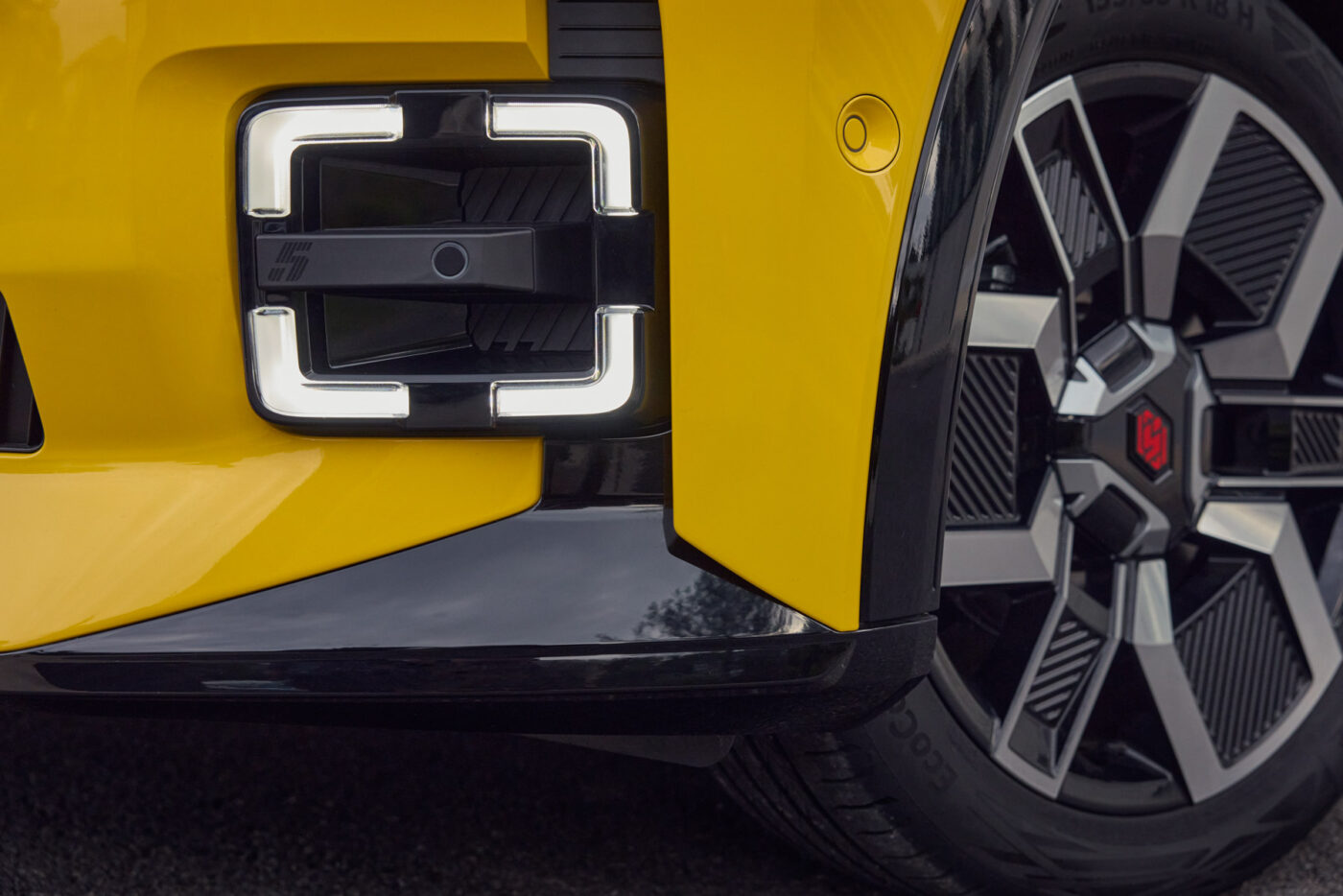
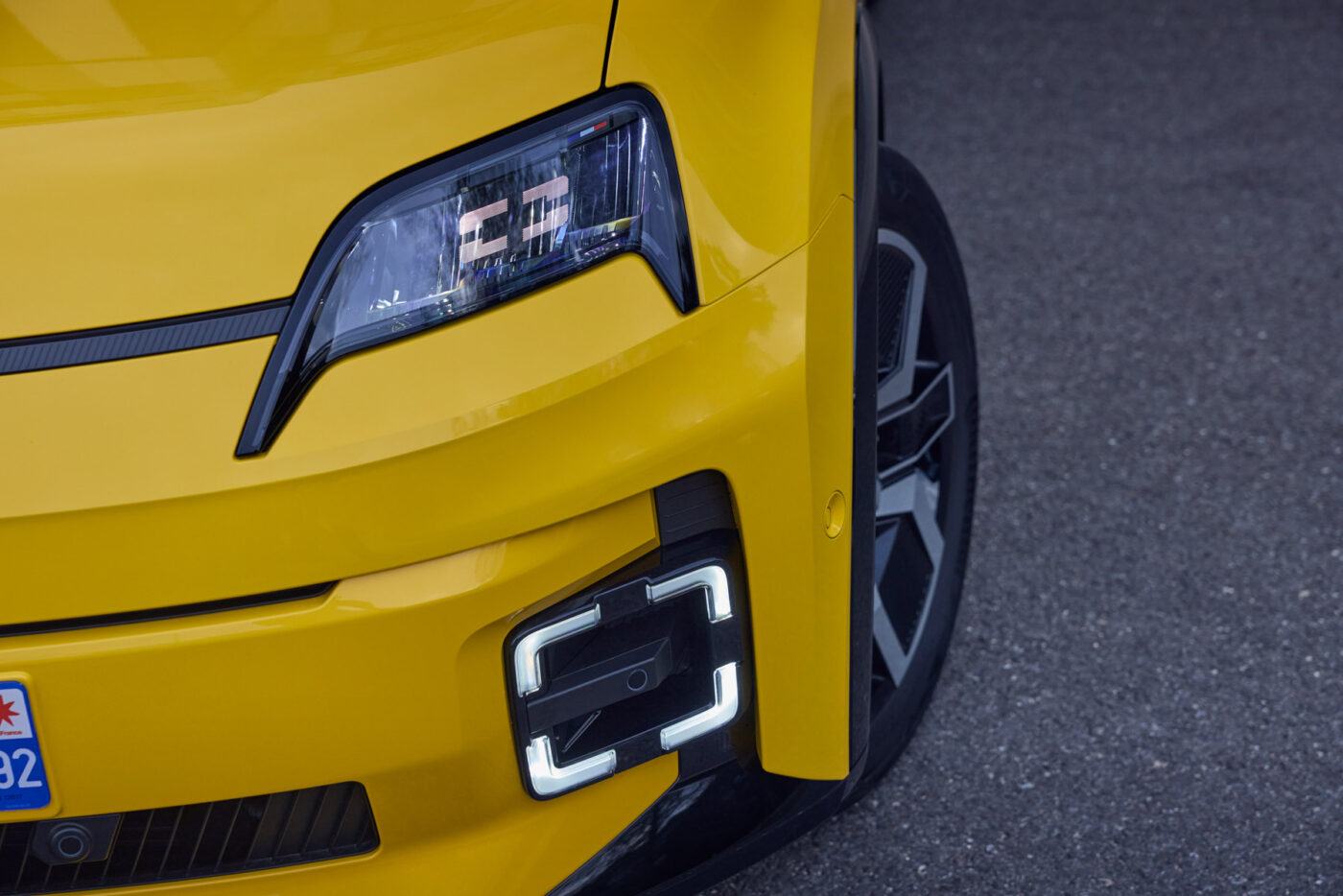
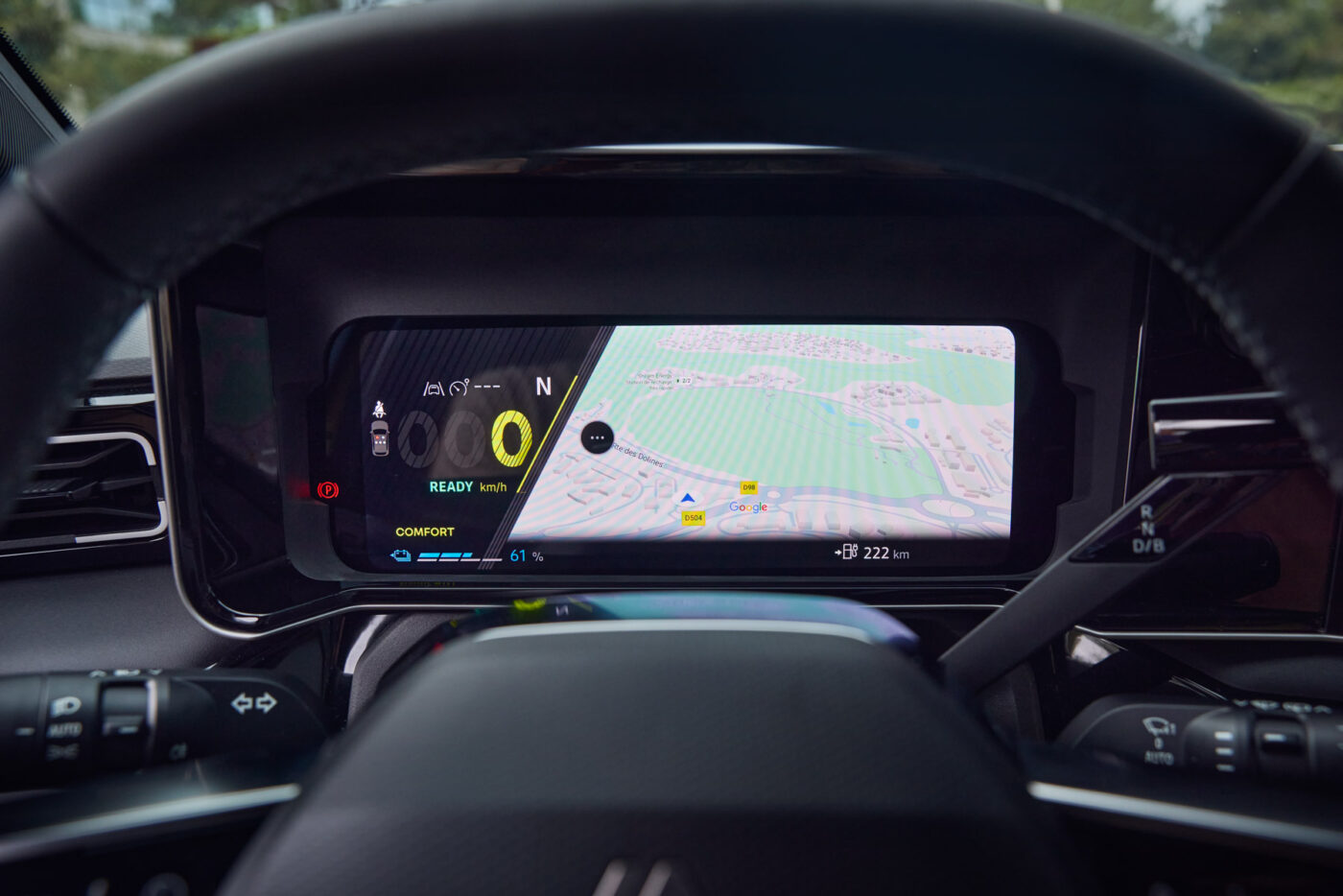
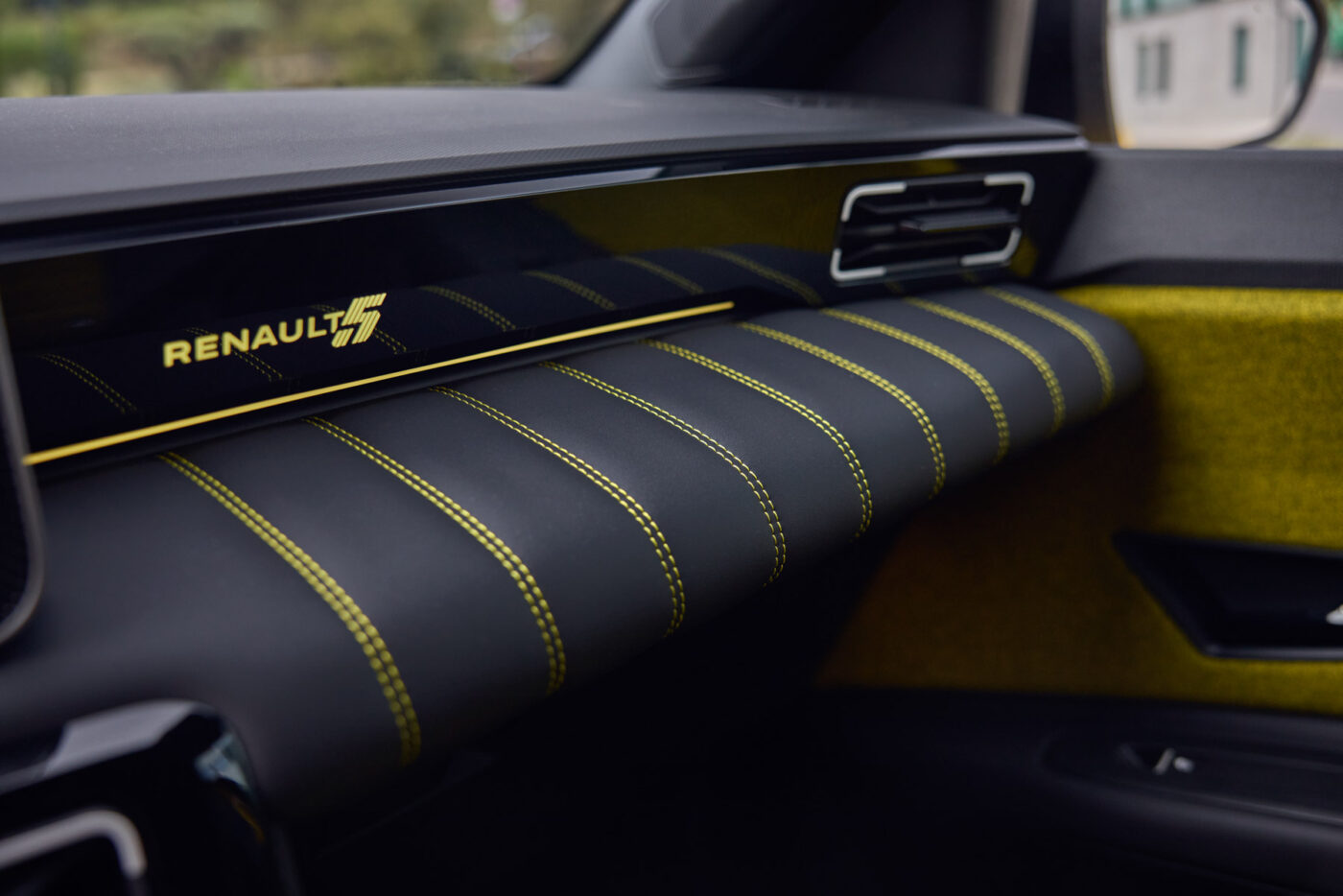
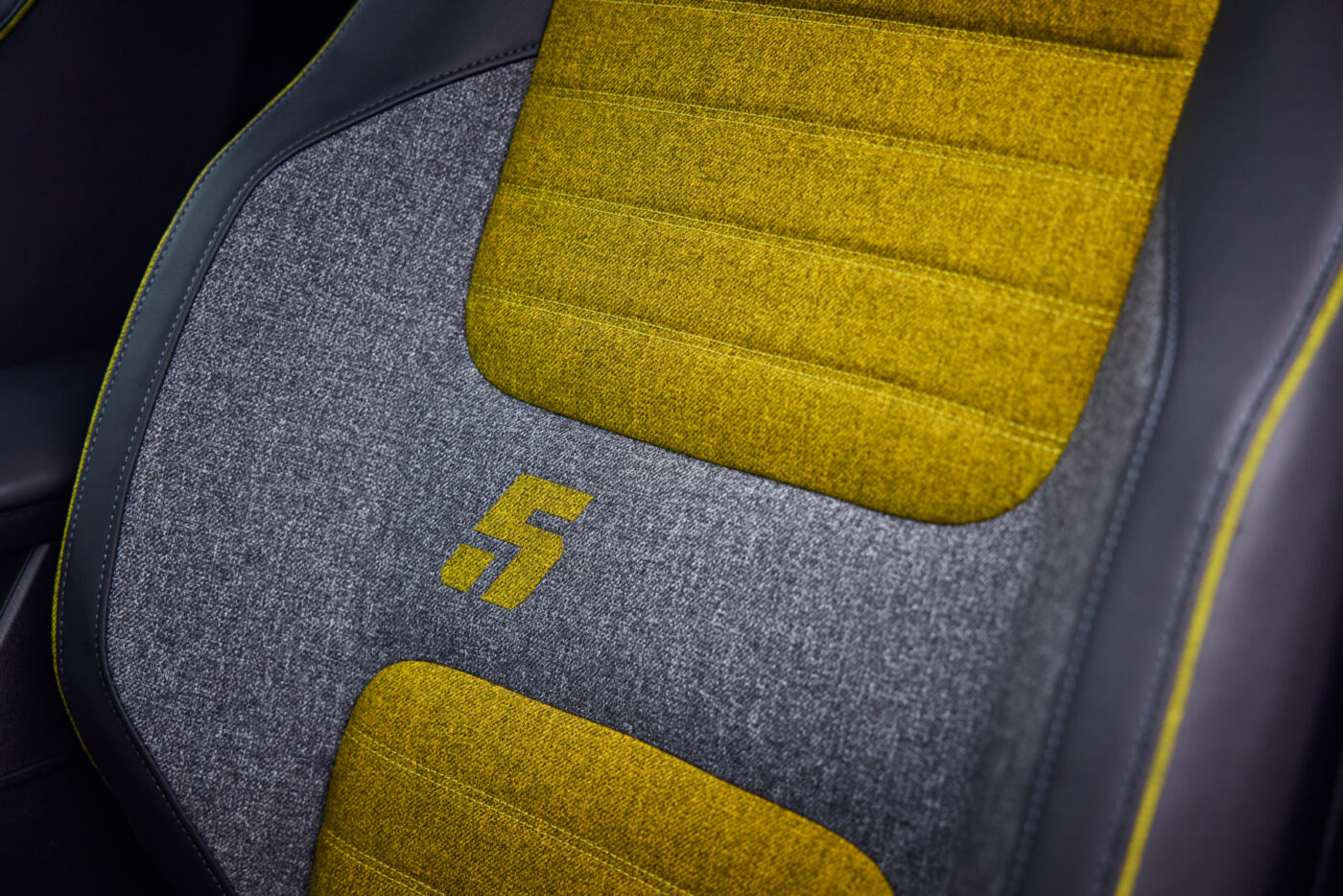
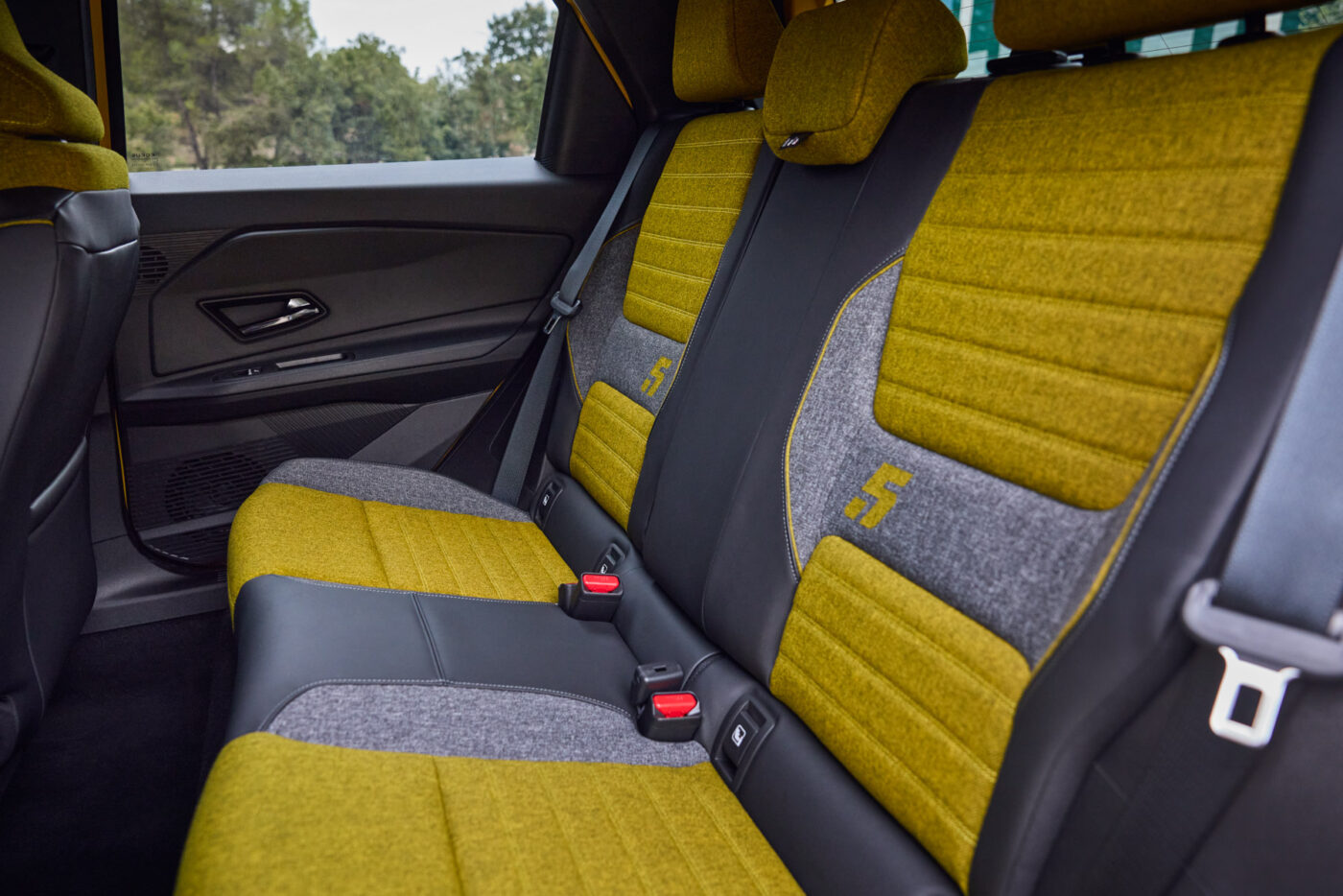
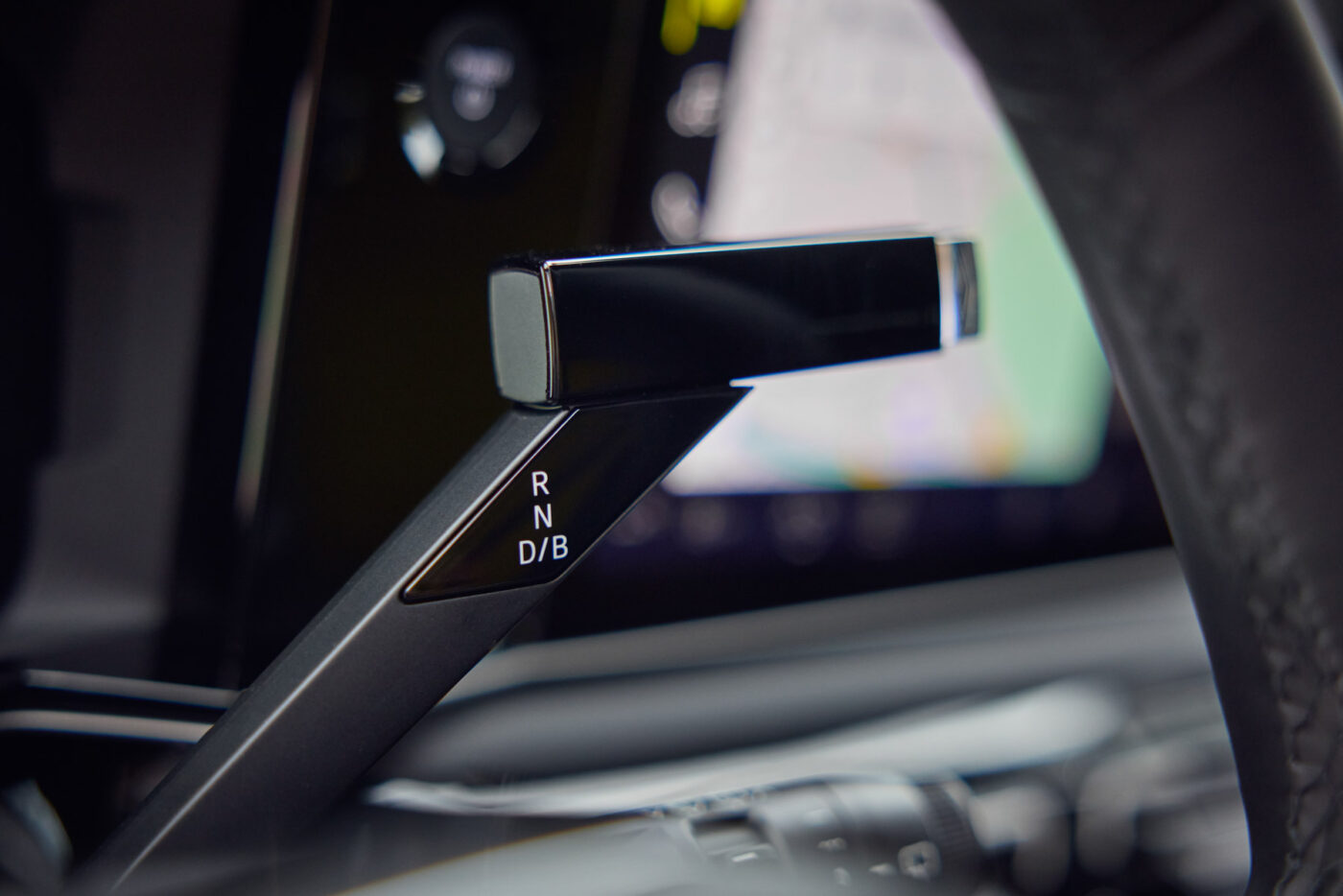
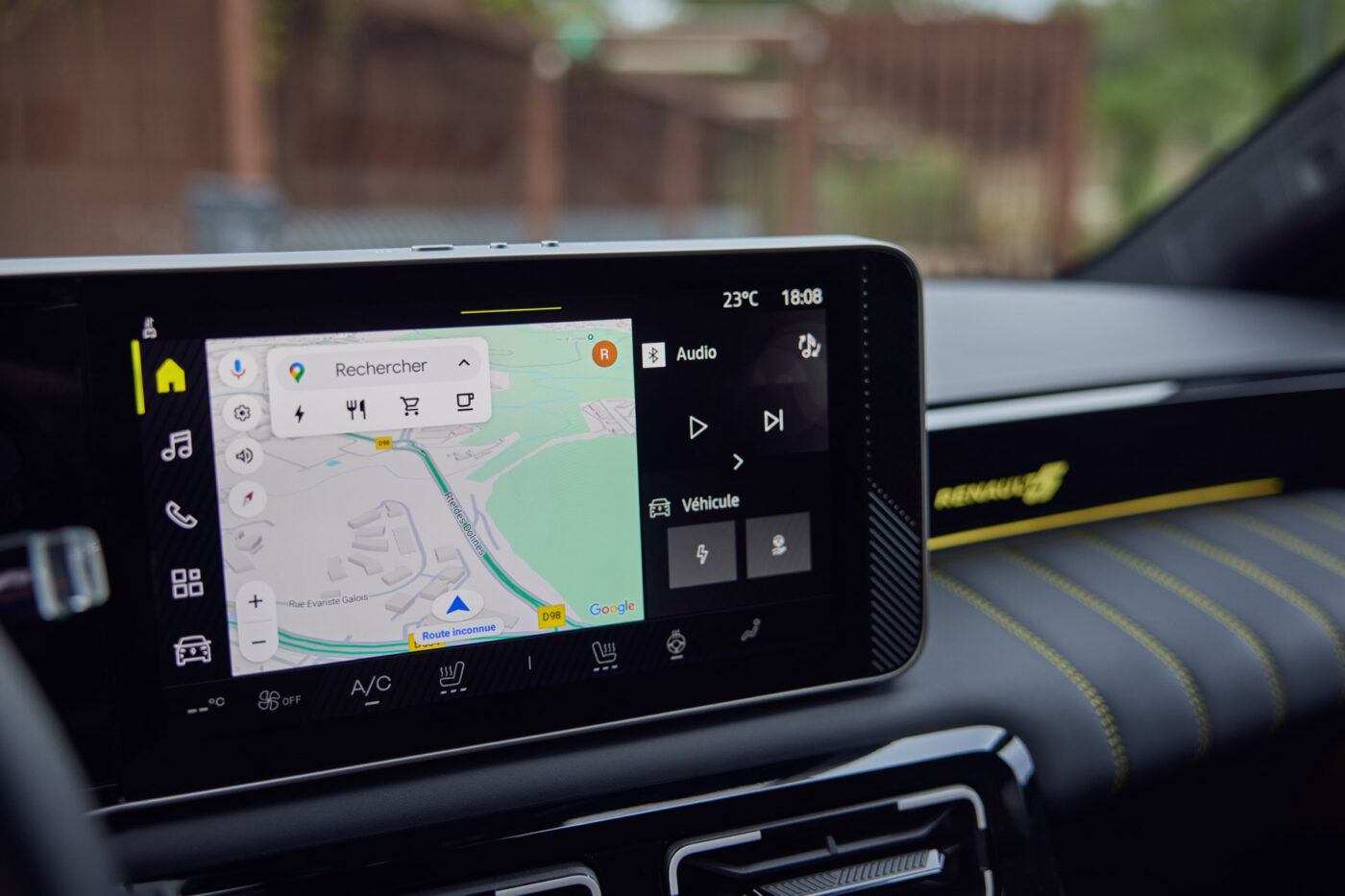
However, where the competition is cutting costs with cheap plastic, Renault has afforded itself a little luxury and a lot of attention to detail in the cockpit. In addition to the obligatory digital displays and the large touchscreen, there is a colourful and elegant selection of materials, and plenty of reason to wink – from the ‘5’ stitched into the seat covers to extras such as a baguette holder and the decorative element on the gear selector. It struggles to stand out from the stubble of the far too many control sticks on the steering column. It can, therefore, be decorated with a glass block in the colours of the French flag or, in the upcoming ‘Roland Garros’ special model, a small tennis racket.
The programmers have also gone to great lengths: the R5 not only offers navigation with intelligent charging planning and digital personalisation, but for the first time, the French company also has an avatar that runs in the car and on the mobile phone and is intended to be an electronic companion for the whole day.
Above all, however, the R5 simply drives well, keeping spirits permanently high. Short, crisp, sporty and agile – the little Gaul in the top version with 110 kW scurries through the hustle and bustle of the big cities as if Asterix had just taken a big swig of magic potion. And where the fun of the competition stops on the city’s outskirts at the latest, it continues unabated with ‘Le Cinq’ on the country road. The car appears more mature, confident, and solid than most small cars. A country drive is thus not a tiresome compulsory exercise but an entertaining leisure activity – and at least in this league, with a top speed of 150 kph, it is even one of the fastest. What’s more, the original was already over at 135 kph.
The R5 proves to have comparatively long stamina and manages 410 standard kilometres with its 52 kWh battery. The fact that the R5 can go that far is also due to the standard heat pump and the – well – low weight. Compared to the 785 kilos of the original, the 1,524 kilos of the new edition are quite obese. But compared to the competition, the R5 really is a lightweight.
| Drive | FWD | FWD | FWD |
| Output | 70 kW | 90 kW | 110 kW |
| Torque | * | * | 245 Nm |
| Acceleration | * | * | 8.0 s |
| Top speed | * | * | 150 kph |
| WLTP range | ca. 300 km* | ca. 300 km* | 410 km |
| Battery | 40 kWh | 40 kWh | 52 kWh |
| Charging capacity DC | 80 kW | 80 kW | 100 kW |
| Charging time DC 15-80% | 30 min | 30 min | 30 min |
| Price | 24,900 euros** | 27,900 euros | 32,900 euros |
*final data not yet known, homologation not finalised
** announced price
As an alternative to the maximum configuration, Renault also offers a battery with 40 kWh for 312 kilometres and a motor with 90 kW. Charging is always at 11 kW at the wallbox, with 80 kW possible with the small battery and 100 kW with the large one. The R5 is one of the few small cars in which the electricity flows in both directions, making it suitable as a power bank for e-bikes and as buffer storage for the solar roof. However, the charging performance is average at best and with such small batteries, 30 minutes for the first 80 per cent is not a commendable value. Especially not when the stopwatch only starts running at 15 per cent. So it doesn’t hurt quite as much that Renault is doing away with fast charging altogether next year for the 90 hp entry-level model for less than 25,000 euros.
However, Renault is not only downgrading the R5; the French will also do one better. In the spirit of the original, the sporty offshoot Alpine is once again taking on the R5 and building its first electric car on this basis. Just like the blessed R5 Turbo in the past, a new A290 is set to take the fun to the extreme.




1 Comment